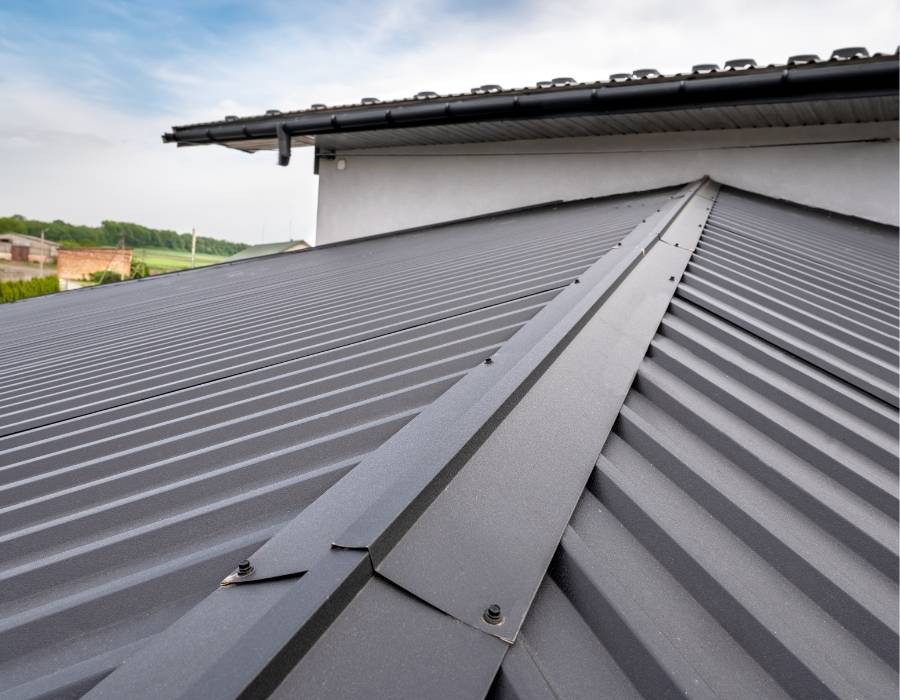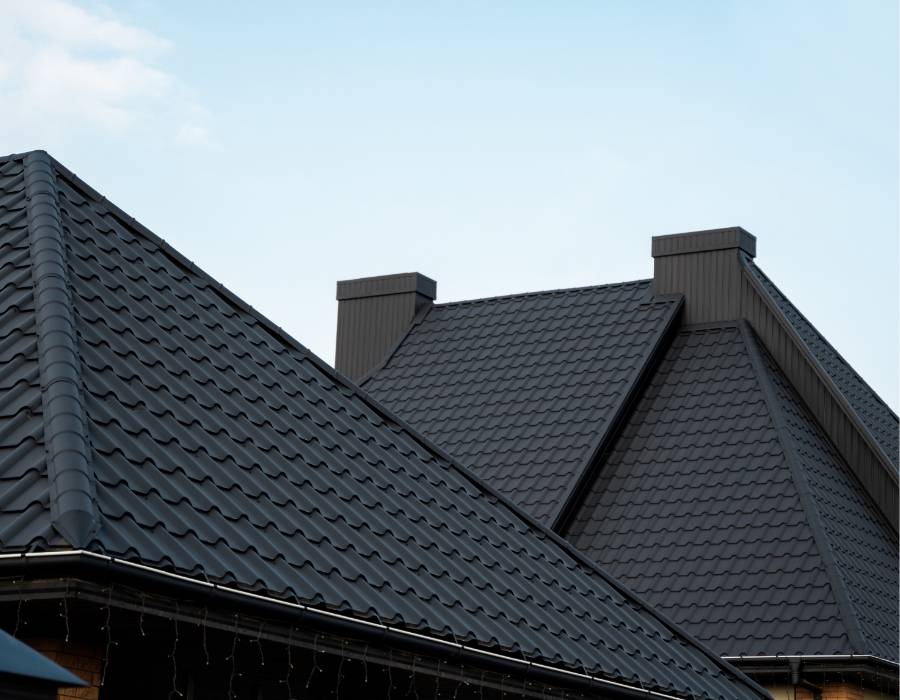Metal Roofing Myths Maryland Homeowners Still Believe
Metal roofs are becoming increasingly popular across the Mid-Atlantic, yet many homeowners in Maryland still hesitate when considering them. Misconceptions about noise, rust, or even lightning strikes persist, even though modern roofing technology has long since addressed these concerns. If you’re researching metal roofing Maryland options, it’s important to separate fact from fiction.
In this article, we’ll debunk the most common metal roof myths, explain why they don’t hold up in today’s market, and highlight the long-term benefits metal roofing provides for Maryland’s unique climate.
Myth #1: Metal Roofs Are Noisy in the Rain
One of the oldest metal roof myths is that they’ll sound like a drum during heavy rain. Homeowners often picture an old tin shed rattling in a storm, but modern installations are very different.
In reality, modern metal roofing systems are designed very differently. Contractors in Maryland install panels over solid decking with quality underlayment, which absorbs much of the sound, while attic insulation and finished ceilings further reduce noise transmission.
The result is that a metal roof is no louder than asphalt shingles, even during summer thunderstorms or coastal downpours. For Maryland homeowners concerned about comfort and peace indoors, this means they can enjoy the durability and storm protection of metal roofing without sacrificing quiet living.
Myth #2: Metal Roofs Rust Easily
Many homeowners worry that metal roofing will rust quickly, especially in Maryland’s humid climate or near the salty coastal air of the Chesapeake Bay and Ocean City. While this might have been true for untreated metal in the past, today’s roofing systems are specifically engineered to resist corrosion. Protective coatings like galvanized zinc and Galvalume shield the panels, while advanced painted finishes add another barrier against oxidation and weathering.
With proper installation and routine maintenance, modern metal roofs can last 40–70 years without significant rusting, making them one of the most durable options available. For Maryland homeowners in coastal regions, investing in a high-quality coated system ensures long-term protection and peace of mind, even in the face of salty air and harsh storms.
Myth #3: Metal Roofs Attract Lightning
One of the most persistent myths about metal roofing is that it increases the risk of a lightning strike. In reality, lightning is drawn to the tallest object in an area, regardless of the material. If a home with a metal roof is the highest point nearby, it could be struck—but the same would be true if the roof were asphalt, wood, or slate.
What sets metal apart is its safety during a strike. Unlike combustible materials, metal roofs are non-flammable and help disperse electrical energy across their surface, lowering the chance of fire. For Maryland homeowners, where summer thunderstorms are frequent, a properly installed metal roof not only doesn’t attract lightning but also provides extra peace of mind compared to more flammable options like wood shingles.
Myth #4: Metal Roofs Make Homes Hotter
A common misconception is that metal roofs trap heat and make homes hotter, but this idea is outdated. Modern metal roofing is designed to reflect, not absorb, solar radiation—especially when finished with light-colored or reflective coatings. Many products even carry ENERGY STAR® certifications, proving their ability to reduce cooling costs during Maryland’s hot, humid summers.
Unlike asphalt, which holds onto heat well into the evening, metal cools down quickly once the sun sets. This means Maryland homeowners can actually enjoy lower indoor temperatures and greater energy efficiency with metal roofing, making it a smart choice for both comfort and cost savings.
Myth #5: Metal Roofs Are Too Expensive
Many homeowners hesitate at the initial price tag of metal roofing, assuming it’s far too expensive compared to asphalt shingles. While the upfront cost is higher, the long-term financial picture tells a different story. Metal roofs often last two to three times longer than asphalt, require less maintenance, and reduce the need for frequent repairs or replacements. Added benefits like improved energy efficiency and potential insurance discounts help offset the investment even further.
For Maryland homeowners, where storms, humidity, and freeze-thaw cycles regularly test a roof’s durability, the long-term value of metal becomes especially clear. Backed by strong manufacturer warranties and decades of performance, a metal roof provides peace of mind and cost savings that make it a smart, future-focused choice.
Myth #6: Metal Roofs Don’t Suit Historic or HOA Communities
A common misconception is that metal roofing looks too modern and won’t fit the character of older homes or HOA-regulated neighborhoods. In reality, today’s metal roofing comes in a wide range of colors and profiles, with options designed to mimic the appearance of slate, wood shake, or even clay tile. These designs allow homeowners to enjoy the strength of metal while maintaining the traditional aesthetic their community requires.
In Maryland, many HOAs already approve muted or historically inspired metal styles that blend seamlessly with neighborhood character. Standing seam metal, in particular, has historic roots dating back to the 19th century, making it a fitting choice for preservation areas in cities like Annapolis and Frederick. This makes metal roofing not only a durable option but also one that can meet both aesthetic and regulatory standards.
Benefits of Metal Roofing for Maryland Homes
Beyond clearing up the myths, metal roofing brings a range of real advantages that make it a standout choice for Maryland homeowners:
- Storm Resistance: Properly installed metal roofs can withstand winds up to 140 mph and resist impact from flying debris during hurricanes and coastal storms.
- Longevity: With a lifespan of 40–70 years, metal far outlasts asphalt shingles, making it a true long-term investment.
- Energy Efficiency: Reflective coatings help deflect solar heat, lowering cooling costs during Maryland’s hot, humid summers.
- Fire Resistance: As a non-combustible material, metal provides added protection during lightning storms and wildfires.
- Low Maintenance: Naturally resistant to mold, mildew, and rot, metal performs well in the state’s damp, humid climate.
- Sustainability: Many metal systems are made with recycled materials and are fully recyclable at the end of their service life.
Preparing for Maryland’s Climate with Metal Roofing
Maryland’s mix of humid summers, coastal storms, and icy winters makes roofing performance especially critical, and metal roofs are built to handle it all. Coated systems resist corrosion and algae growth in damp conditions, while strong panels stand up to high winds and driving rain during hurricane season. In winter, proper installation with flexible fasteners helps manage expansion and contraction from freeze-thaw cycles. This year-round adaptability makes metal one of the most reliable and resilient roofing options for Maryland homeowners.
Choosing the Right Contractor
Even with the best material, success depends on skilled installation. When selecting a contractor for your metal roofing Maryland project, look for:
- Manufacturer Certifications: Proof they’re trained and approved to install specific roofing systems.
- Local Experience: Knowledge of Maryland’s weather challenges, from coastal storms to freeze-thaw cycles.
- Regulatory Familiarity: Experience navigating HOA guidelines and historic district approval processes.
- Strong Warranties & References: Solid workmanship guarantees and positive feedback from other Maryland homeowners.
Why Metal Roofing Is a Smart Investment in Maryland

Many metal roof myths keep homeowners from choosing one of the most durable and efficient systems available. In reality, today’s metal roofing is quiet, rust-resistant, energy-saving, and storm-proof — making it an ideal fit for Maryland’s diverse climate.
By investing in metal roofing Maryland homeowners can enjoy long-term performance, lower maintenance costs, and peace of mind during storm season. Don’t let misconceptions guide your decision. Instead, rely on facts, modern technology, and expert installation to give your home the protection it deserves.

